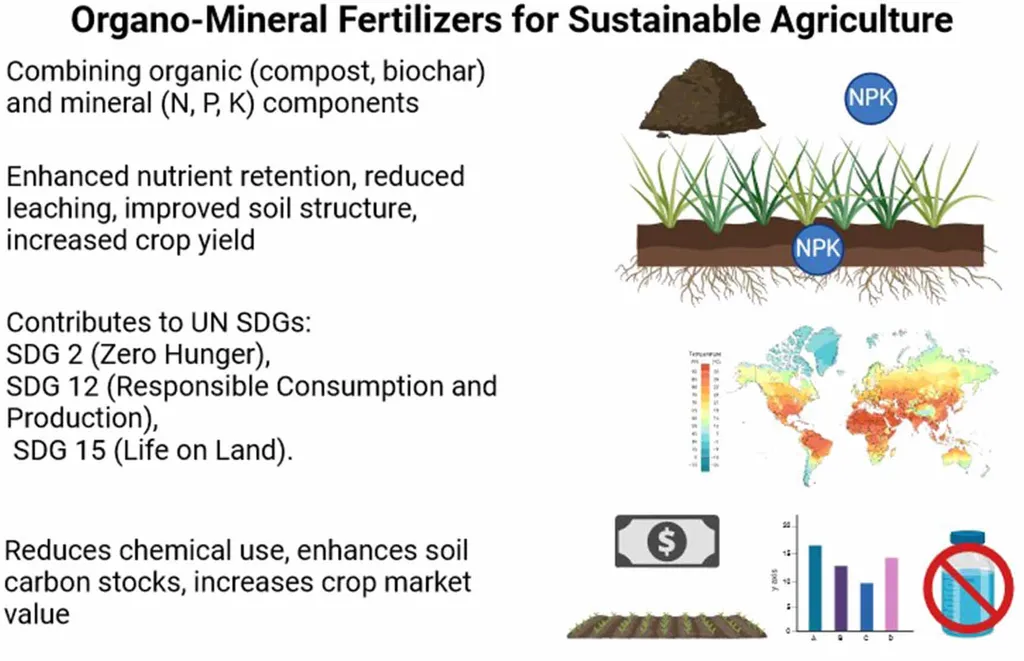In the quest for sustainable agriculture, a groundbreaking study published in *Sustainability Science and Technology* (translated from Polish as *Nauka i Technologia Zrównoważonego Rozwoju*) offers a promising solution: organo-mineral fertilizers (OMFs). These innovative fertilizers combine organic and mineral components to enhance soil fertility, reduce environmental harm, and boost crop productivity. The research, led by Katarzyna Chojnacka from the Department of Advanced Material Technologies at the Wroclaw University of Science and Technology in Poland, highlights the potential of OMFs to address key agricultural challenges and contribute to global food security.
Organo-mineral fertilizers utilize bio-based materials like biochar and compost to reduce nutrient leaching by up to 40%, improve water retention, and mitigate soil erosion. “OMFs not only enhance soil aggregation and porosity but also promote efficient nutrient cycling and resilience to environmental stress,” explains Chojnacka. This dual-action approach optimizes nutrient delivery, minimizing runoff and volatilization, while supporting beneficial microbial communities. The slow-release mechanisms of OMFs ensure that nutrients are available to crops over extended periods, reducing the need for frequent applications and lowering input costs.
One of the most significant advantages of OMFs is their ability to increase soil organic carbon. This not only supports sustainable intensification in nutrient-poor soils but also reduces greenhouse gas emissions, aligning with climate action goals and the United Nations Sustainable Development Goals. “By transforming agricultural residues into nutrient-rich fertilizers, OMFs contribute to the circular bioeconomy, reducing waste by 20% and sequestering carbon to mitigate environmental degradation,” Chojnacka adds.
The economic impact of OMFs is substantial. Precise nutrient management reduces input costs, improves yields, and minimizes chemical residues in crops. This makes OMFs an attractive option for farmers looking to enhance productivity while reducing environmental impact. The adoption of OMFs could also support the energy sector by promoting sustainable practices that reduce the carbon footprint of agricultural activities.
However, the path to widespread adoption is not without challenges. Optimizing formulations for diverse soils and efficiently scaling production are critical hurdles that need to be addressed. Collaboration among researchers, policymakers, and agricultural stakeholders is essential for refining technologies and ensuring broader adoption. As Chojnacka notes, “The potential of OMFs to enhance sustainable agriculture is immense, but realizing this potential requires a concerted effort from all stakeholders.”
The research published in *Sustainability Science and Technology* underscores the transformative potential of organo-mineral fertilizers. By increasing crop yields, reducing greenhouse gas emissions by up to 30%, and mitigating nutrient leaching, OMFs offer a viable path to achieving global goals for food security and climate change adaptation. As the agricultural sector continues to evolve, the adoption of OMFs could play a pivotal role in shaping a more sustainable and resilient future.

